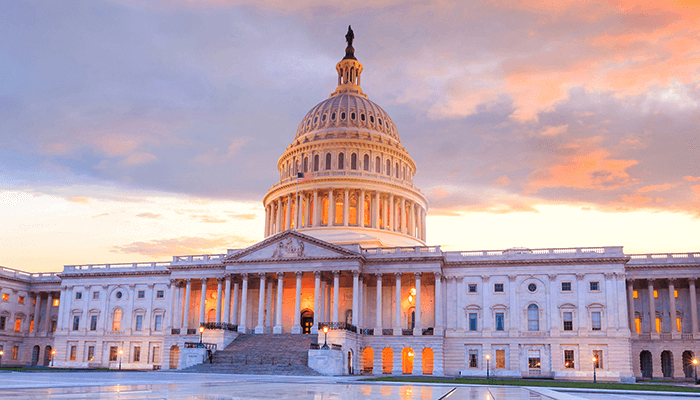What’s Driving Medicaid Spending?
In the Congressional Budget Office’s (CBO) latest budget baseline, the agency revised projections of Medicaid enrollment and outlays for the next decade – estimating that outlays will be more than $300 billion higher between Fiscal Year (FY) 2024 and 2033 than projected last year.
In this piece, we show:
- In FY 2024 alone, Medicaid is projected to spend $48 billion more than projected in February and $68 billion more than projected in May of last year.
- From FY 2025 through 2034, CBO increased its projections of Medicaid spending by $319 billion since February.
- Driving the increase in projections are higher expected enrollment combined with several rules that have been finalized by the Centers for Medicare & Medicaid Services (CMS) since February.
After several years of elevated spending levels largely related to increased enrollment during the pandemic and additional Federal Medical Assistance Percentage (FMAP) funding from the Families First Coronavirus Response Act, CBO projected in May 2023 that Medicaid spending would fall from FY 2023 to 2034, from a projected $594 billion to $539 billion. Instead, Medicaid outlays topped $616 billion in 2023 and will remain at $607 billion in 2024 – $68 billion higher than projected in May 2023 and $48 billion higher than projected in February 2024.

Much of this increase appears to be due to higher-than-anticipated actual spending – nearly every category of Medicaid spending is now higher than projected in 2023.
Over the next decade, some of the projected increase in Medicaid spending is from an uptick in state directed payments (SDPs) to managed care plans. As we have written about before, these payments drive up Medicaid spending by increasing reimbursements to providers that are then matched by the federal government. In 2024 alone, CBO projects that SDPs will increase federal Medicaid spending by $4 billion and add a combined $85 billion from 2025 through 2034.
Additionally, CBO now projects Medicaid enrollment will be higher over the next decade due to two unforeseen factors. First, although states have begun phasing out the COVID-era Medicaid enrollment and continuous eligibility mandates, the reduction in enrollment is occurring more slowly than CBO had initially expected. As a result, Medicaid costs are projected to be $67 billion higher than previously projected over the next decade. Furthermore, CBO attributes a significant rise in immigration as contributing an additional $29 billion in Medicaid spending on benefits.
Finally, the remaining increase in Medicaid spending over the next decade stems from rules recently finalized by CMS. One is an enrollment rule aimed at simplifying the enrollment process for states to include eligible beneficiaries for which CBO added $38 billion to Medicaid spending projections over a decade. A separate rule related to SDPs adds $58 billion to the Medicaid spending baseline over a decade by allowing states to pay providers up to the average rates in the commercial market. As we wrote in late May, CMS expects that this will lead states to quickly increase their SDPs, despite other features in the rule – that don’t take effect until 2028 – that may work to restrain growth. Both rules were not yet finalized when CBO created its baseline, so under conventional CBO scoring, these projections only reflect 50 percent of expected costs.
While Medicaid spending has historically grown with health spending generally, and with more limited during times of economic expansion, CBO’s projections paint a different picture – one of higher enrollment and higher spending from non-care-related increases. Policymakers should consider how to control Medicaid spending growth alongside all other health spending as a means to stem the unsustainable rise in the national debt.

